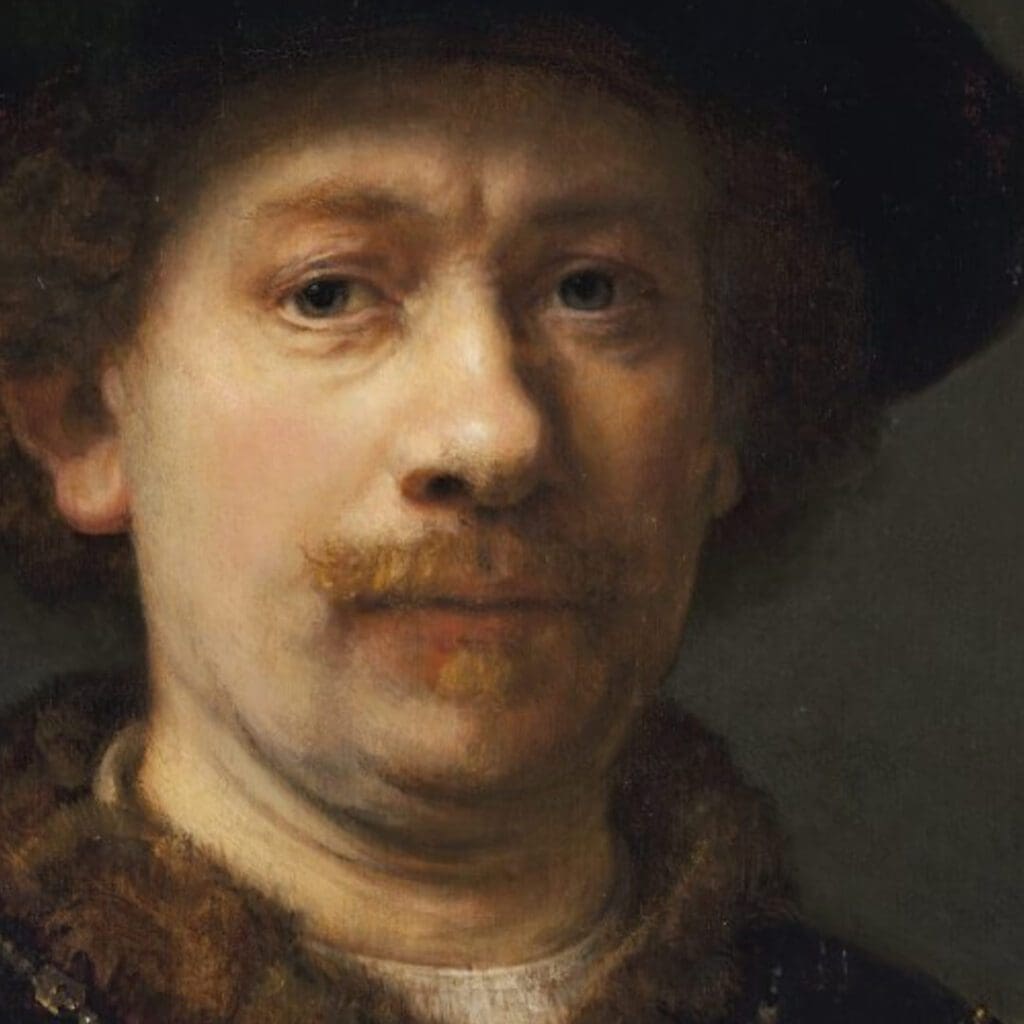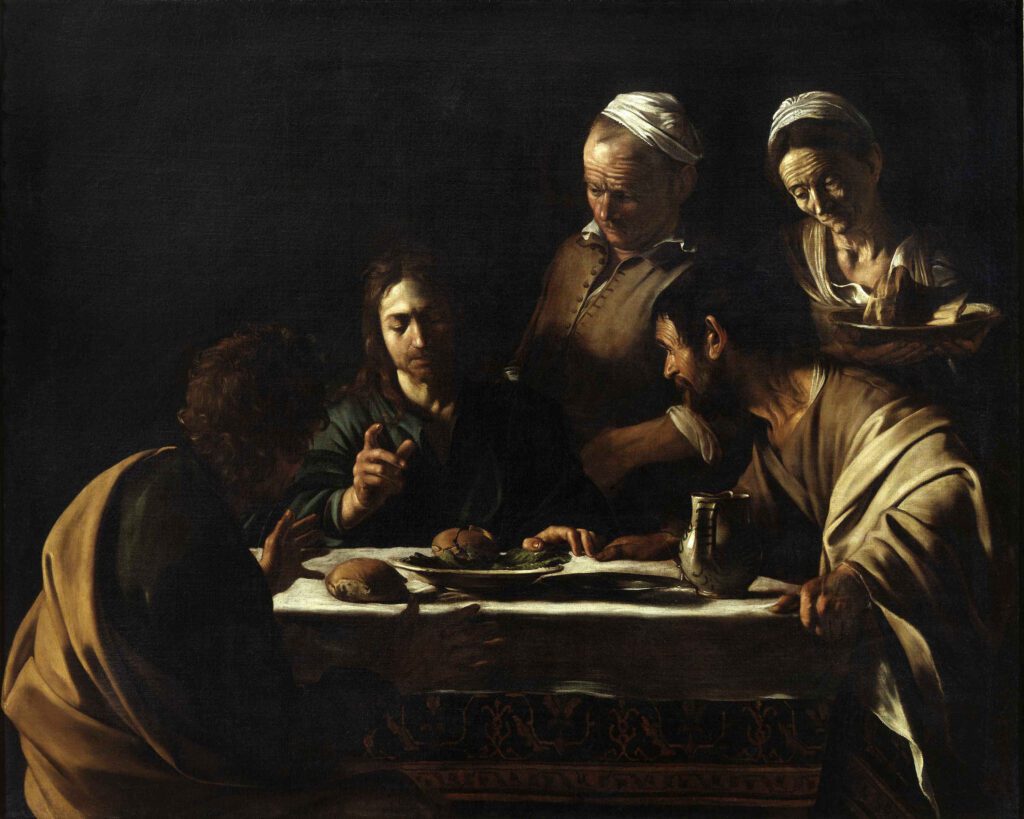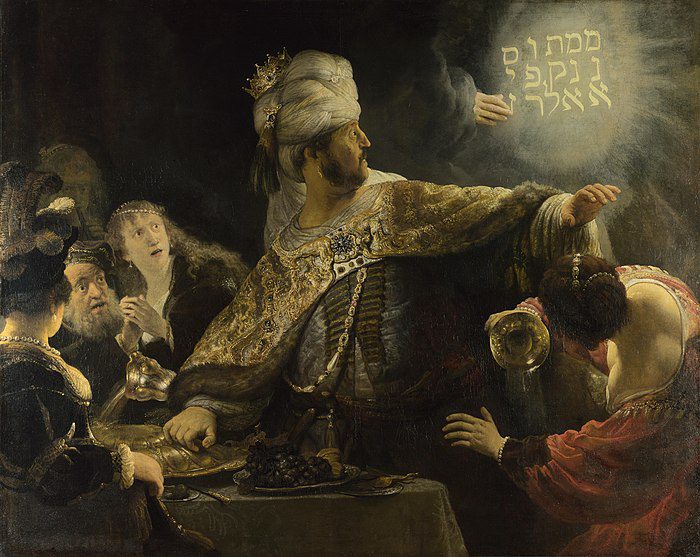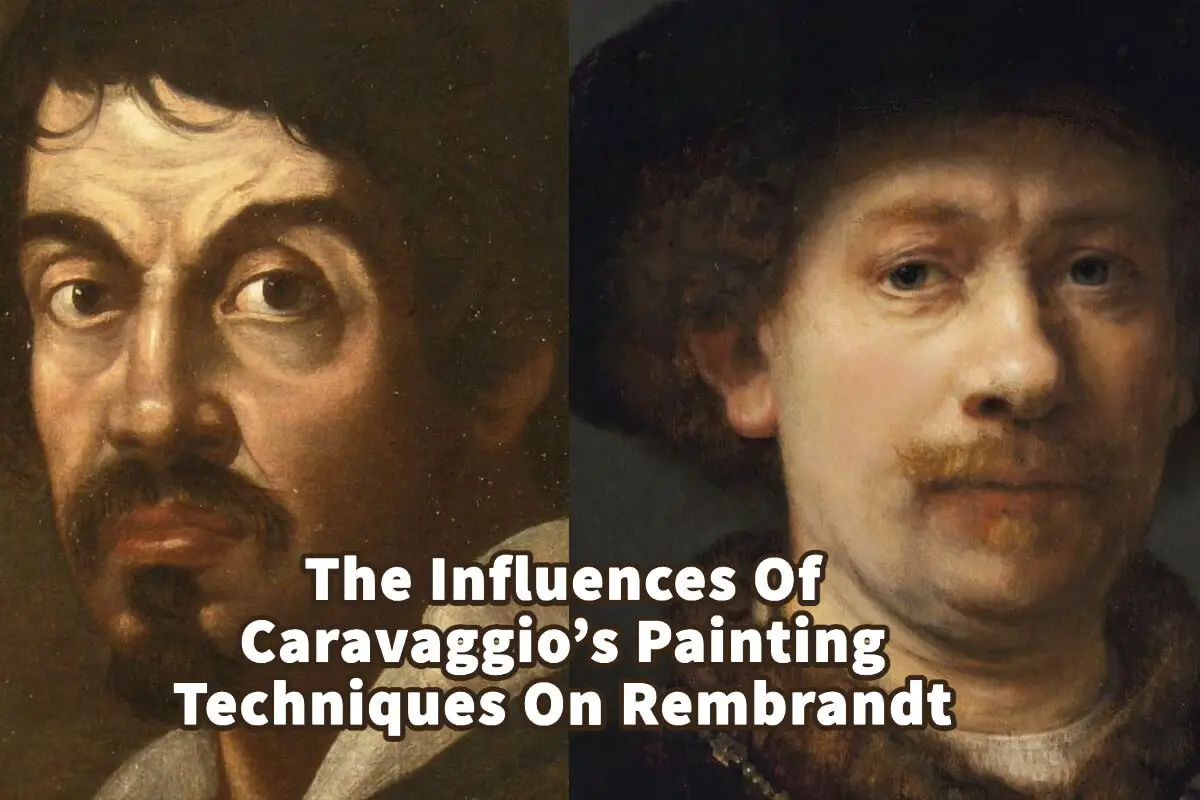When we look at great artists, the name Rembrandt comes to mind, and Caravaggio. Both men are great artists who influenced others.
The Italian artist Caravaggio influenced many Baroque artists. Even though he never met Rembrandt, and Rembrandt had not personally seen it in any of his paintings, Caravaggio still influenced Rembrandt; Caravaggio influenced how Rembrandt used light and dark. Both artists have quite a bit in common and are both fantastic artists.
Table of Contents
- Caravaggio’s Influence On Rembrandt’s Art
- About The Italian Artist Caravaggio
- Influences Of Caravaggio On Rembrandt
- Frequently Asked Questions
- Related Questions
Caravaggio’s Influence On Rembrandt’s Art


It is well-known that Rembrandt was influenced by the Italian artist Caravaggio. It can be said that Caravaggio influenced every significant Baroque artist during this time.
Caravaggio lived in Italy his entire life; Rembrandt never traveled outside Holland or to Italy. Rembrandt never met Caravaggio and never saw an original Caravaggio painting.
Caravaggio died four years after Rembrandt was born. Caravaggio painted for the Catholic Church and aristocrats. On the other hand, Rembrandt worked in a mainly Protestant country and painted for the wealthy middle class.
Caravaggio’s influence traveled and reached Rembrandt because of other artists who made their way to Holland, and those artists helped influence Rembrandt. It was the Dutch Caravaggio’s fans that influenced Rembrandt.
So we can say that Caravaggio’s influence on Rembrandt was not direct but was more of Rembrandt seeing Caravaggio’s influence through others.
But whatever way Caravaggio’s influence came, it did come. These artists join their use of light and shade to create powerful portraits and works of art.
Caravaggio Vs. Rembrandt Explained
Even though Caravaggios indirectly influenced Rembrandt, there are some similarities.
- Use Of Dark – Caravaggio used a lot of dark, and his dark is mainly very black. Rembrandt used black, but it has shadows and outlines on it.
- Use Of Light – You cannot talk about Caravaggio or Rembrandt without talking about how they used light in their paintings.
- Details Feel Real – Both Caravaggio and Rembrandt paint with realism. The human figures come to life. Rembrandt took what Caravaggio was doing and built upon it to produce superior works of art.
- Story Telling – Both men tell us a story with their paintings, but Rembrandt usually tells a warmer and cozier story than Caravaggio’s.
- Composition – Caravaggios off-centers his painting and subjects quite a bit, and Rembrandt may also sometimes do this, but mainly has them front and center.
- Realism – They both had a great sense of realism and were able to make their subjects come off the canvas and come to life.
- Details – Both artists had a fantastic amount of information. Still, some of Rembrandt’s details surpass Caravaggios in how he had the fabric to everything else he painted come entirely to life.
Both artists are amazing. Caravaggio influenced a generation of Baroque artists, whereas Rembrandt is still considered one of the greatest artists ever.
About The Italian Artist Caravaggio
Caravaggio was an Italian artist from 1571 to 1610, so he would have lived and practiced art about a generation before Rembrandt. He was active mainly in Rome for most of his artistic life.
Caravaggio is most well known as a painter who combined artistic observations of humans, both physical and emotional. He also used a dramatic use of light. Caravaggio had a significant influence on Baroque Painting, including on Rembrandt.
Influences Of Caravaggio On Rembrandt
One of the best ways to examine Caravaggio’s influence on Rembrandt is to explore some of their paintings. You can see some comparisons between the two great artists in these paintings.
We learn from their painting that Caravaggio and Rembrandt were tremendous artists; they could do large feasts, goddesses, and flora in their artwork.
Caravaggio’s Supper at Emmaus and Rembrandt’s Belshazzar’s Feast


Comparing Caravaggio’s Supper at Emmaus and Rembrandt’s Belshazzar Feast, you can see how each artist handled the subject of a feast or eating. We love how Rembrandt used light and dark and how the figures in his banquet seem to come to life and are filled with small details.
In this painting, you can see how Rembrandt built upon what Caravaggios was doing and made it extraordinary with all his details and feeling of human movement.
Caravaggio’s Penitent Magdalene and Rembrandt’s Flora


In Caravaggio’s Penitent Magdalene and Rembrandt’s Flora, we can see how each man used the subject of painting a woman. In the case of Caravaggio, he painted Mary Magdelene as she cradled her stomach.
I love the detail of her dress and how she stands out from the dark background.
Rembrandt’s Flora is a painting of his wife Saskia in Flora, the goddess of spring and flowers. He painted her many times as a goddess. In this artwork, he painted Saskia in the year of their marriage, showing his deep love and admiration for Saskia.
Again, the detail he used for her clothes is exquisite and exceptional. We can see his use of light and dark patterns in the painting.
Both artists are amazing, but we can see how Rembrandt built upon what Caravaggio started and took his use of light, dark, and subject matter to new heights.
Frequently Asked Questions
How did Caravaggio influence Rembrandt’s painting techniques?
Caravaggio’s use of chiaroscuro (light and shadow) had a profound impact on Rembrandt’s approach to lighting in his paintings. Rembrandt adapted and expanded upon Caravaggio’s techniques to create his own distinctive style.
Did Rembrandt ever meet Caravaggio in person?
No, there is no historical evidence to suggest that Rembrandt and Caravaggio ever met. Despite the lack of direct contact, Caravaggio’s artistic innovations were transmitted through the works of other artists, influencing Rembrandt indirectly.
What specific aspects of Caravaggio’s art influenced Rembrandt the most?
Caravaggio’s dramatic use of light and shadow, his naturalism, and his focus on realistic depiction of human emotion had a profound impact on Rembrandt’s artistic development.
In what ways did Rembrandt incorporate Caravaggio’s chiaroscuro techniques into his paintings?
Rembrandt adopted Caravaggio’s chiaroscuro techniques to create a strong contrast between light and dark in his compositions. This use of light became a hallmark of Rembrandt’s style, contributing to the emotional depth of his works.
Can you provide examples of Rembrandt’s paintings that clearly reflect Caravaggio’s influence?
Paintings such as “The Supper at Emmaus” and “The Anatomy Lesson of Dr. Nicolaes Tulp” are notable examples where Rembrandt’s use of light and shadow reflects Caravaggio’s influence.
How did Caravaggio’s influence contribute to the Baroque elements in Rembrandt’s art?
Caravaggio’s emphasis on realism and theatrical lighting aligns with the Baroque aesthetic, and Rembrandt’s incorporation of these elements helped define the Baroque style in Dutch art.
Did Rembrandt acknowledge Caravaggio’s influence on his work?
While there is no direct acknowledgment from Rembrandt, art historians and critics have identified Caravaggist elements in Rembrandt’s paintings, suggesting an indirect influence.
How did Caravaggio’s and Rembrandt’s use of light and dark differ?
While both artists employed chiaroscuro, Caravaggio’s lighting tended to be more dramatic and sharp, whereas Rembrandt’s approach was often characterized by a softer and more diffuse use of light.
Were there any other aspects of Caravaggio’s art that influenced Rembrandt beyond chiaroscuro?
Caravaggio’s naturalistic portrayal of subjects and his ability to capture intense human emotions were additional influences on Rembrandt’s artistic expression.
Did Rembrandt ever paint subjects similar to those found in Caravaggio’s works?
Yes, Rembrandt explored similar biblical and mythological themes as Caravaggio, infusing his own interpretation and style into subjects that were reminiscent of Caravaggio’s iconic paintings.
Anita Louise Art is dedicated to art education, great artists, and inspiring others to find and create their art. We love art that uplifts and inspires. #ArtToMakeYouSmile! #ArtToMakeYouHappy!
If you are interested to see any of my art, you can find out more by clicking here. If you are interested in what inspires me and my paintings, you can discover more by clicking here.
We have a free newsletter and would love you to be part of our community; you can subscribe to the newsletter by clicking here. If you have any questions, I would be happy to talk to you anytime. You can reach me, Anita, by clicking here.
Subscribe to our Anita Louise Art YouTube Channel with great videos and information by clicking here.
Related Questions
Mona Lisa Painting And The Paris Louvre Museum
The Mona Lisa is one of the key paintings of the Louvre Museum. It is one of the most visited paintings in the world. The Mona Lisa is a painting studied, sang about, written about, and spoken about. There is still a mystery surrounding exactly who the Mona Lisa is and why Leonardo da Vinci painted it. This mystery adds to the allure of the painting.
By clicking here, you can learn more by reading Mona Lisa Painting And The Paris Louvre Museum
What Is The Difference Between Unity And Harmony in Arts?
Harmony is about art that creates cohesiveness, it stressing the similarities but related parts in the work of art. Unity is a much broader term; unity is all about the different parts of the work of art that are separate but all work together as one. In other words, unity is all the parts working well together in art.
By clicking here, you can learn more by reading What Is The Difference Between Unity And Harmony in Arts?.
Hawaiian Native Art – 8 Artists To Discover
Hawaiian native art is an art movement that reflects Hawaii’s culture, people, legends, and traditions. The Hawaiian native artists all captured the richness of the native Hawaiian life, landscape, culture, and traditions of the Hawaiian islands. Many of these important Hawaiian artists were not born in Hawaii. Still, they became so fascinated with Hawaii that they spent most of their artistic lives painting Hawaiian subject matter.
By clicking here, you can learn more by reading Hawaiian Native Art – 8 Artists To Discover.


